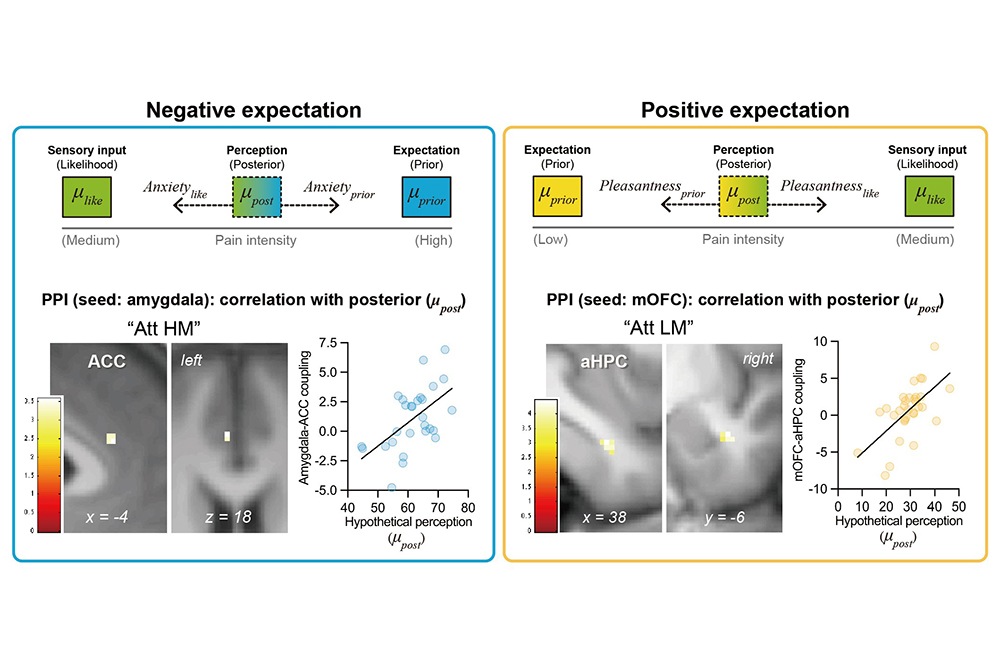Human pain perception is influenced by individual cognition and emotional state. When individuals take a placebo believed to alleviate pain, even though the substance lacks any pain-relieving properties, they can still experience a reduction in pain. This phenomenon is known as the "placebo effect." Why do individuals experience pain relief when the substance does not actually contain pain-relieving ingredients?
Associate Professor Tseng Ming-Tsung and his research team at the Institute of Brain and Mind Sciences at National Taiwan University conducted a functional Magnetic Resonance Imaging (fMRI) experiment to address this intriguing question. By recording participants' emotional responses and pain ratings, they found that when anticipating increased pain, participants felt anxious, which heightened their perception of pain. Conversely, anticipating decreased pain generated relatively pleasant emotions, thereby reducing pain perception. The research team further discovered through computational models that participants' past experiences of pain and the emotions elicited by current pain stimuli contribute to the brain's information integration, ultimately determining the perceived sensation of pain.
The results of the functional MRI showed that anticipating increased pain activated the amygdala in the human brain through the regulation of pain perception by anxiety, while anticipating decreased pain induced pleasant emotions processed by the medial orbitofrontal cortex. These two brain regions integrate signals of anticipated and actual pain stimuli via functional connections with the anterior cingulate cortex and hippocampus, generating the pain experienced by participants. Additionally, when participants anticipated increased pain, the prediction error signal of the anterior cingulate cortex was suppressed, preventing them from updating their expected intensity and thereby maintaining the anticipated pain-enhancing effect.
This study decodes the neural mechanisms in the human brain involved in pain perception, helping to explain why chronic pain patients often experience abnormal pain expectations and emotional responses. It sheds new light on the development of treatment methods. The research findings have been published in The Journal of Neuroscience, a publication of the Society for Neuroscience, and selected as a featured study in "This Week in The Journal." The study was primarily conducted by doctoral student Hsin-Yun Tsai, who continued her studies in the doctoral program after completing her master's degree in 2018. Additional experiments were added during the review process to meet all journal requirements. This project was supported by research funding from the National Science Council, and the brain imaging was conducted at the Integrative Brain Imaging Center on the main campus of National Taiwan University.
Link to the paper: https://www.jneurosci.org/content/44/17/e1627232024
Source: https://www.ntu.edu.tw/spotlight/2024/2273_20240522.html


